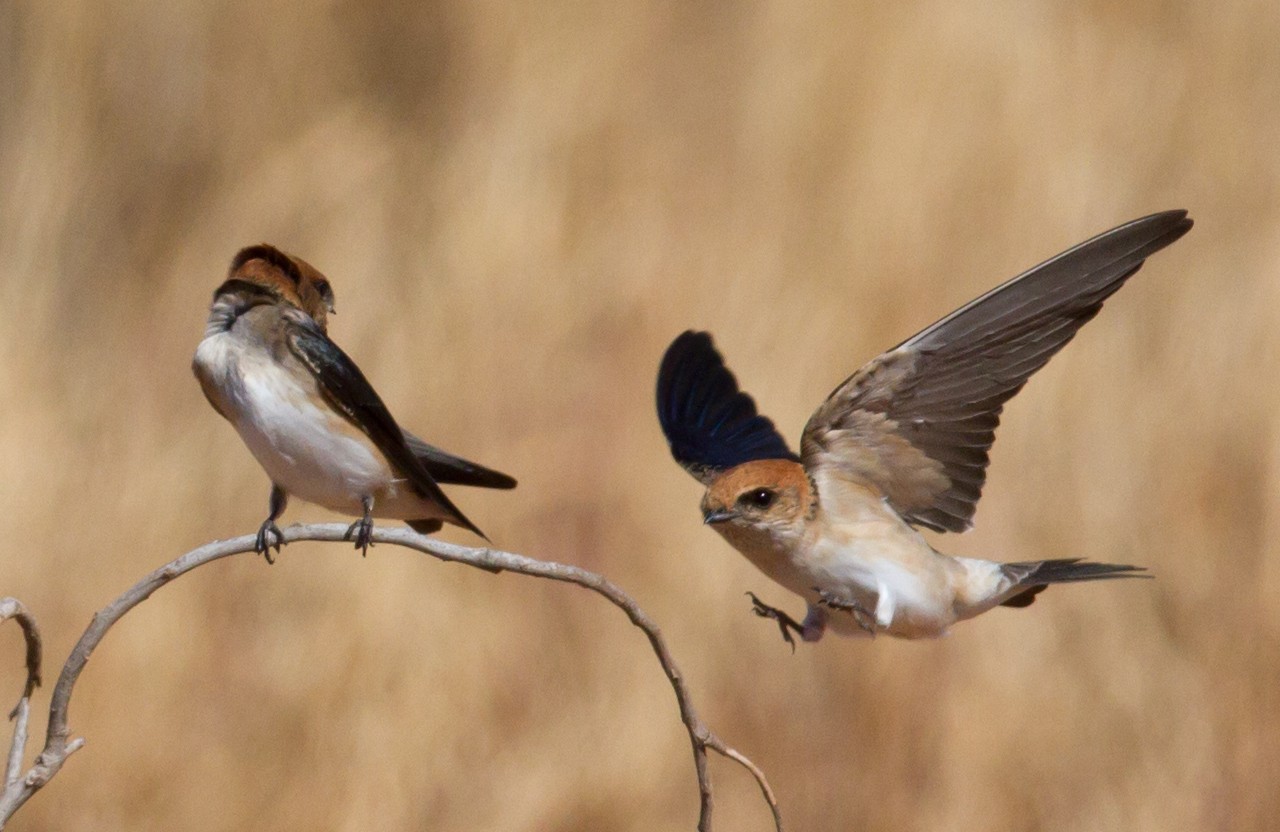Fairy Martin
A species of Cliff Swallows and Allies Scientific name : Petrochelidon ariel Genus : Cliff Swallows and Allies
Fairy Martin, A species of Cliff Swallows and Allies
Botanical name: Petrochelidon ariel
Genus: Cliff Swallows and Allies
Content
Description General Info
 Photo By Jim Bendon , used under CC-BY-SA-2.0 /Cropped and compressed from original
Photo By Jim Bendon , used under CC-BY-SA-2.0 /Cropped and compressed from original Description
The fairy martin is dumpy and square tailed. It averages 12 cm long and weighs 11 g. The adult has an iridescent blue back, brown wings and tail, a rufous crown and nape, and a whitish rump. The underparts are dull white. The sexes are similar, but young birds are duller and browner, with a paler forehead and pale fringes to the back and wing feathers. This species can be distinguished from other Australian swallows by its pale rump. The most similar species, the tree martin, has a shallowly forked tail and blue-black head and nape. The call of this vocal swallow is a chrrrr and the song is a high-pitched twitter. The vocalizations are higher pitched than those of the tree martin. 
Size
11 cm
Nest Placement
Cliff
Feeding Habits
Fairy Martin's diet consists of mayflies, termites, bugs, beetles, flies, hymenopterans, and moths. Flocks forage together, often in high flight, and fairy Martin also feeds on moths on lawns.
Habitat
The fairy Martin typically inhabits open environments, favoring regions that comprise open woodlands and grasslands. Proximity to water bodies is a common characteristic of these areas, as fairy Martin often select sites close to such aquatic resources for nesting and feeding.
Dite type
Insectivorous
General Info
Feeding Habits
Bird food type
Behavior
Fairy martins breed from August through to January in colonies usually of a few tens of nests, but the largest known site had 700 nests. Nests are constructed in natural holes in dead trees, riverbanks, cliff faces or rock crevices, but increasingly in artificial sites on bridges, in culverts and pipes, and on buildings. The nest is a retort or bottle shaped structure, made from up to 1000 mud pellets and lined with dried grasses and feathers. The bowl is about 15 cm in diameter, and the entrance tunnel is 5–30 cm long. The nests in a colony are clustered together. Both sexes build the nest and share incubation and care of the young. The clutch is usually four, sometimes five, reddish-brown speckled white eggs, and this species is often double or triple brooded. The fairy martin feeds high in the air on flying insects, usually in large flocks. Fairy martins have a slow fluttering flight and feed higher than welcome swallows. They will also feed on insect swarms low over water, and have been recorded feeding on injured moths on a newly-cut lawn. This species is highly gregarious and forms large flocks, often with tree martins. 
Species Status
Not globally threatened.